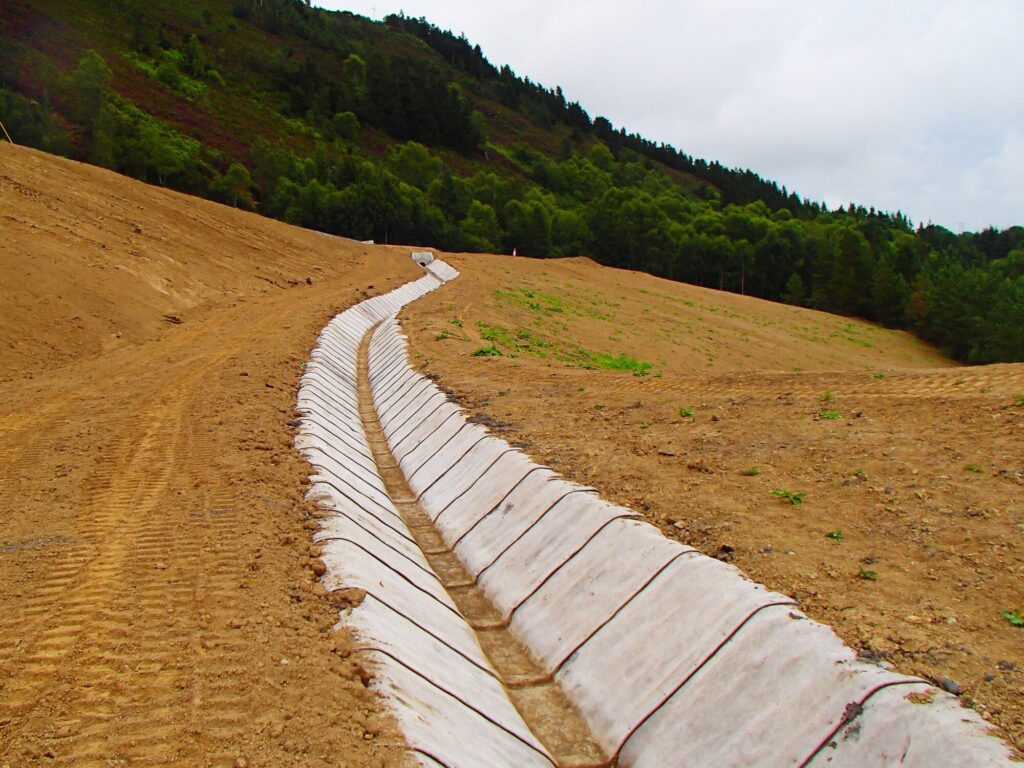

Usage
Les produits CoirGreen® se sont avérés utiles dans de nombreux aspects différents du contrôle de l’érosion et de l’horticulture/agriculture.
Contrôle de l'érosion du sol
Soil erosion is a naturally occurring process, but human activity, such as construction, intensive agriculture and clearing of forests, has accelerated the growth of soil erosion, globally. However, soil erosion can be controlled or prevented with the use of CoirGreen® Geotextiles, CoirGreen® blankets and CoirGreen® Coir logs (Biologs).
Soil erosion is usually caused by wind, water, or ice; by down-slope creep of soil and other material under the force of gravity; or by living organisms, such as burrowing animals and humans. It is a major environmental problem, globally, leading to catastrophic damage to water, landscape, and wildlife. Repairing the effects of soil erosion can be difficult, time consuming and expensive.
Global soil erosion destroys over 15 million acres of land each year and studies suggest that increased rainfall will lead to greater rates of erosion.
Erosion control involves the prevention or control of wind or water erosion in agriculture, land development, and construction. Most commonly, some form of physical barrier, such as vegetation or rock, is built to absorb some of the energy from the wind or water that is causing erosion. Effective erosion control measures are important techniques in the prevention of water pollution and soil loss.
Glissements de terrain et stabilisation des pentes
Steep slopes, low soil fertility, unstable soils, compacted tills, flowing silts and other adverse conditions are typical of many landslides, globally. Restoration following landslides is a significant challenge; however, CoirGreen® coir products, such as Geotextiles(Coir netting), can be used to complement soil bioengineering or bio technical techniques. Slope stabilization and soil bioengineering can be used to provide a self-sustaining vegetation cover on many landslides and unstable slopes. For example, the use of grass and legume seeding for erosion control or more complex slope stabilization with live cuttings and other plants, or reinforced ground, such as concrete blocks are among the measures that can be taken to prevent landslides and ensure slope stabilization. Today’s stabilization experts can produce results that are both effective and aesthetically pleasing.
Stabilisation des berges de la mer et des berges de la rivière
Water erosion is caused by two different actions, both of which can be controlled by CoirGreen® Erosion Control Products.
Firstly, erosion is caused by the movement of water across the riverbed (Hydraulic action). Secondly, the sediments transported across the river wears away the riverbed (abrasion) and the fragments themselves are ground down, becoming smaller and more rounded (attrition).
Greater understanding of the role of vegetation would enable us to better utilize vegetation on stream and river banks to provide well integrated river management systems.
New and innovative methods for recovery of stream-bank vegetation on persistently bare gravel bars include bioengineering techniques using CoirGreen® natural coir products, Coir netting , Erosion control blankets and and Coir logs, which are used to stabilize sediments in the bank. This “bioengineering” or “soil bioengineering” is a collection of technologies mainly derived from European research and application over the last 200 years.
Utilisation horticole
Coir fibre and its extracts are regarded as good substitutes for commonly used products of the horticulture industry.
CoirGreen® natural coir maintains excellent air porosity even after saturation. With a 96% pore space, it allows water to drain easily, preventing water logging; yet at the same time, allowing it to hold a maximum amount of water (78%), which remains available at low tensions.
Coir products are therefore an excellent substitute for peat, enhancing the growing medium of many plants. Additionally, it can also be used to make pots in which to grow the plants.
“What I see in nature is a magnificent structure that we can comprehend only very imperfectly, and that must fill a thinking person with a feeling of ‘humility.’ This is a genuinely religious feeling that has nothing to do with
– Albert Einstein (1879-1955)




